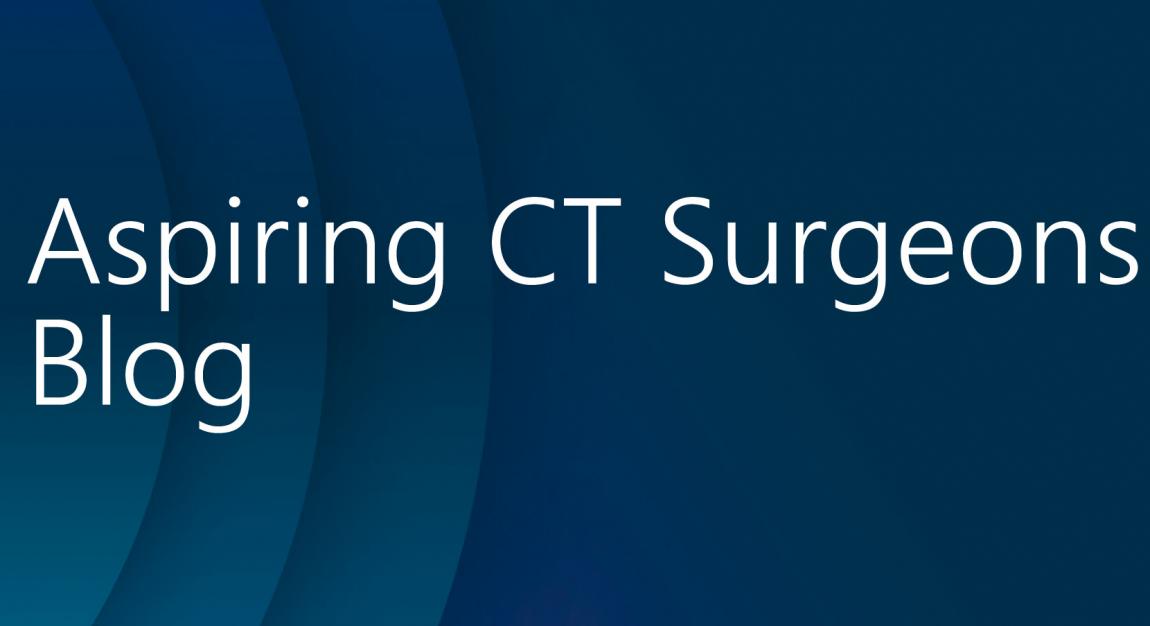- Active unfreezing
- Giving and receiving grace
- Asking for help

As a PGY5, I caused an iatrogenic aortic dissection during cannulation.
I had just placed two purse strings in the aorta and pushed the cannula through my stab incision. The blood pressure was appropriately low. But as I stood the cannula upright, the formerly white ascending aorta flashed to a deep purple. I heard the anesthesiologist say “oh shit” as he showed us the dissection flap on echo. I froze.
Immediately we switched sides, and my attending talked the room through a major change in plans—from routine mitral valve surgery to circulatory arrest, aortic replacement, and mitral valve replacement. Through his expeditious work, the patient survived the operation, but ultimately passed away from complications.
In cardiac surgery, the highs are soaring and the lows subterranean. As trainees, we receive little guidance in how to cope with complications. Though I’m fortunate to have a robust support system outside the hospital, my financier husband understandably did not learn how to talk through patient deaths in his MBA courses.
The experience is isolating. And yet, it is a rite of passage each of us must grow through as cardiothoracic surgeons. Since that event, I’ve learned three keys that I now share with junior residents:
- Active unfreezing
- Giving and receiving grace
- Asking for help
The most important time in a patient death is when they haven’t died yet. In this critical period, which may follow a technical error—as in my case above—it is imperative to temporarily compartmentalize our feelings to save the patient.
While we cooled to 18C, my attending told me to snap out of my obvious freeze and that we would talk about what happened later; but in that moment, he needed my hands and head at the table, where we still had a patient’s life to save.
It took me being on the other side—taking juniors through routine cases and watching them process their own mistakes—to fully appreciate what this takes. To effectively unfreeze after an error takes recognizing and quieting our ego that says “I can’t believe I just did that” followed by “Am I a bad surgeon?” While these questions have a time and place, their primacy is of the self. To be effective for our patients, our ego must wait.
While on my congenital rotation, I watched an experienced ENT drive a bronchoscope through the posterior tracheal membrane of a baby. After the case, he apologized to the congenital surgeon, who smiled and responded: “It’s ok, I wish I could tell you that I didn’t have complications.”
The grace he shared in that moment, despite obvious frustration at an unanticipated complication, is something I since have carried with me. As surgeons, we are connected by our desire to help patients through our technical skills, but we also are connected through our shared fallibility—try as we might to hide that at times. The flip side to the ego statement “I can’t believe I just did that” is a belief that we, unlike every other human, should not make mistakes. In fact, it is rooted in a lack of humility. In my experience, the antidote to this is grace.
Mistakes are inevitable and being able to share our experiences with colleagues allows us to give and receive grace, which ultimately makes it easier to give it to ourselves. Now, the supportive sharing of operative misadventures in my co-fellow office has become a key to my survival in fellowship.
Of course, none of these maneuvers ultimately can save us from facing the grief of a patient death. As fellows, our busy schedules help us compartmentalize, but it’s moments of rest when the compartments come down, and the sadness waiting there can be crushing. This is the second victim phenomenon, a well-documented occurrence health care workers experience after adverse events that can lead to depression and burnout. This effect may be especially stark in cardiothoracic surgery, in which the stakes of each operation and the corresponding feeling of personal responsibility are highest.
At our institution, access to a clinical psychologist is free for all trainees. Aside from meeting with a professional, I have talked to experienced surgeons who have been in my shoes. Mentors from within and outside of cardiothoracic surgery have been generous in sharing the mistakes, deaths, and coping strategies that have stayed with them over the years. It is through these stories that we must gain perspective as a trainee, and keep in mind that the number of patients we help will outnumber the number we fail.
Despite all these strategies, the pain of a patient loss will forever be a fact of our profession. But perhaps one of my mentors said it best: ”If ever I reach the point that a patient death does not affect me, I’ll know it’s time to quit.”
The opinions expressed in this article are those of the author and do not necessarily reflect the views of The Society of Thoracic Surgeons.
